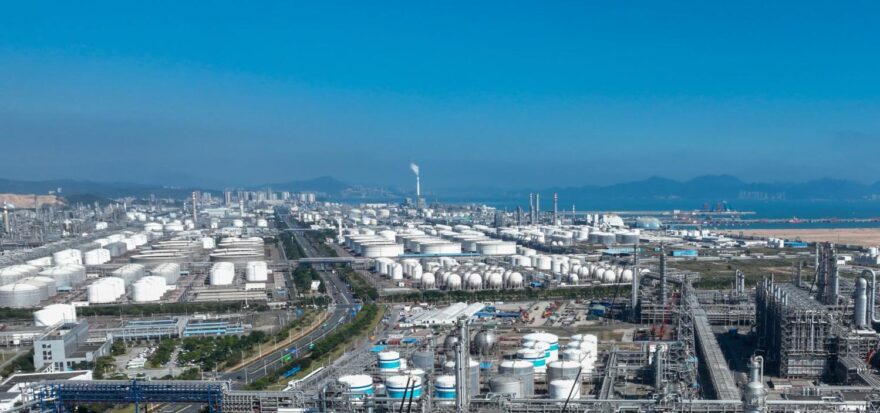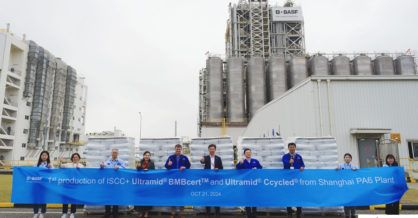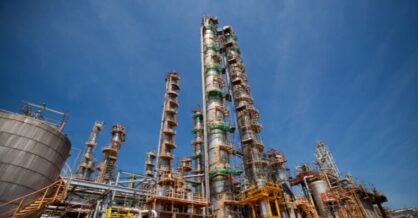Sidel honoured for innovative eco-packaging concept AYA
Sidel has developed a comprehensive innovative “End to End” packaging alternative for still water, covering all angles from 100% recycled PET (rPET) primary to carton secondary and on to tertiary packaging alternatives – all optimised for local distribution methods. For their latest eco-friendly packaging design concept AYA, Sidel has been awarded with the World Food Innovation Award (WFIA) in the category “Best Drink Packaging Design”. With the AYA design, The result is an overall cost-effective and sustainable packaging concept which supports circular economy requirements, while improving environmental impact and industrial production efficiency.
“We are honoured that, with this distinction, the WFIA appreciates how much our AYA concept contributes in terms of designing and valuing a sustainable packaging solution as a whole – optimally combining primary and secondary packaging using less packaging material to save on resources.”
Laurent Lepoitevin, Packaging Design Engineer, Sidel
Distinguished dedication to optimal packaging concepts
Improving recyclability by reducing packaging waste is one of the foremost challenges in the food and beverage industry. Sidel works in partnership with its customers and packaging manufacturers with the aim to develop more sustainable primary and secondary packaging. Thus, Sidel’s eco-packaging concept AYA was born, reinforcing the company’s commitment to sustainability.
Sidel revealed that the intention behind this new concept is to provide people with safe drinking water, who do not have a secure access to it naturally. For instance, the AYA bottle can be used when humanitarian aid is needed to provide the right amount of water for concerned people.
Recognition for an innovative 100%-rPET V-shape bottle
In detail, AYA is a 220ml water bottle, featuring a V-shape. Weighing just 5g, it is designed to radically reduce materials right at the source: The bottle is blown from 100% rPET preforms to bring a circular economy into reality, offering a new life to every bottle. AYA also comes with a snap-on tethered cap, aiming to additionally reduce plastic pollution. Furthermore, brand names, logos and legally required information may be engraved in relief onto the bottle, thus eliminating the need of label to reduce waste and facilitate PET bottle sorting and recycling even more.
The eco-friendly AYA marks the first bottle concept released by Sidel to the industry which was been designed with an articulated shoulder featuring three stable positions – a Sidel packaging solution named Swing shoulder. After the blow moulding process, the bottle shoulder remains in an intermediary deployed position. After filling and capping, a mechanical pressure is applied on the shoulder to move it down and create the final AYA’s V-shape. Thus slightly pressurised, the bottle bulk is reduced, while at the same time its resistance throughout the supply chain is enhanced.
A deployed shoulder position is possible to enlarge the volume and avoid any droppage when opening. AYA also features a specific deep base to allow to stack the bottles, reducing the height to improve the whole storage volume.
Secondary packaging reduced to a minimum
Engineered within the Sidel end-to-end approach to better leverage packaging as a whole throughout the supply chain, the AYA bottles’ V-shape offers two innovative packaging alternatives in terms of compactness and reduction of secondary and tertiary packaging materials compatible to optimise logistics.
Firstly, it offers the possibility to stack the bottles in layers on top of each other, making them nested together due to their specific deep base shape connecting the low bottle neck and the top bottle base. The “BOSS” base shape accommodates another bottle’s cap, ensuring stability during pallet storage and transport. In this layout, each layer of bottles is being held together with a cardboard separator that fits over the necks. Furthermore, the size of the separator can be adapted to form individual custom packs, which can meet any space and storage constraints at the points-of-sale.
Then, the second alternative is leveraging the bottles’ V-shape’s space saving attributes even more efficiently: seeing as they can be placed top-to-tail, in a staggered fashion, to optimise the use of secondary packaging space and place as many bottles as possible in a volume, suited to distribution needs. Thus, the bottles can be arranged to optimise storage volume, making for compact cases that can be easily transported.
Lepoitevin concluded: “Naturally, we applied this end-to-end approach also to the AYA concept: Not only do we always take primary, secondary and tertiary packaging as well as their interaction with the equipment in the factory into account when designing new concepts. We also consider all the impacts they create upstream and downstream in the entire value chain – always aiming to deliver the most sustainable packaging solutions onto the shelves and to the consumers.”




